California Aquatic Invasive Species: What Boaters Should Know
Hundreds of aquatic invasive species are currently threatening California’s waters. Efforts to contain their spread are complex and costly, with millions of dollars already invested.
It’s important for recreational boaters to be aware of the problem and take steps to avoid accidentally contributing to the spread of aquatic invasive species in California.
What are aquatic invasive species (AIS)?
Aquatic invasive species (AIS) are non-native algae, plants, fish, mussels and other species that cause harm and spread quickly when introduced into a new body of water. They are generally able to reproduce at a rapid rate, with just one individual often generating thousands of seeds or larvae or reproducing easily from fragments of stems, roots or leaves.
Egeria densa, water hyacinth and quagga and zebra mussels are just a few of the aquatic invasive species California is currently battling.
How do AIS spread?
The increasing ease of transportation between regions and waterways facilitates the spread of aquatic invasive species. Trans-oceanic shipping is a major source of AIS, with species easily hitching a ride in ballast water or on the hulls of ships. The pests can also cling to recreational gear and fishing equipment and get caught in propellers and intakes, travelling from waterway to waterway with the help of unwitting pleasure boaters.
Why are aquatic invasive species a problem?
Aquatic invasive species can have a wide range of negative impacts on the areas they infest. They may damage the local habitat, displace or endanger native species, clog waterways and water delivery systems, disrupt agriculture and fishing, weaken flood control structures and more.
Furthermore, due to their prolific reproductive capabilities, they are very difficult to eradicate once present.
How to mitigate the spread of aquatic invasive species in California
Since aquatic invasive species are so easily spread, it is imperative for recreational boaters to carefully clean and inspect their vessels when transporting them from one waterway to another. Follow this checklist every time you take your boat out of the water:
- Carefully inspect your boat and trailer any plants or wildlife
- Clean any visible mud, plants or wildlife off of your boat and equipment
- Drain all water (motor, ballast, etc.)
- Dry your boat and equipment thoroughly
- Dispose of any debris and live bait in the garbage
Report any AIS you find to the California Department of Fish and Wildlife
The California mussel sticker
Vessels that are registered in California and operating on freshwater in the state are required to display a Mussel Fee Sticker next to their California boat registration sticker on each side of the hull. Government vessels and boats that are ONLY used in marine waters are exempt from this requirement.
Payment of the Mussel Fee goes towards infestation prevention efforts. Note that paying the Mussel Fee does not exempt a vessel from any additional inspections or fees required by individual waterway owners.
Learn everything you need to know about boating from Drive a Boat USA!
Recreational boaters have a responsibility to do their part to ensure that California’s waterways remain safe and enjoyable for everyone. That responsibility includes learning about things like aquatic invasive species, California boating regulations and safety measures.
Drive a Boat USA offers a NASBLA-approved US boat safety course that can be completed online. Learn everything you need to know about boating with us, then take the exam to obtain your California boater card. Register today!

